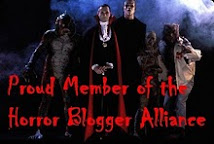(2012, Dir. by Bradley Rust Gray.)
A remake in name only of the John Cougar Mellencamp classic (OK, it's not related to the song, but you ALL were thinking it), Jack and Diane is one of those films that just left me shaking my head in confusion. That doesn't mean it's a bad movie, per say, it just means that it's one of those movies that made me stare at the screen and shout things like "WHO ARE YOU?" as I tried to figure out its intentions.
The title characters, despite your preconceived notions, are two teenage girls who quickly and abruptly fall in love during late summer in the city. It's all well and good, except for the disapproving families and the fact that Diane is going away to school in two weeks and - oh yeah - the fact that Diane might also be a werewolf.
Now, if you're like me, you just heard the word werewolf and got really excited. That happened to me when I heard about the movie, I admit it. There was a time and a place - probably Italy in the early '70s - when abstract and surreal lesbian werewolves were probably a thing. But this one is a far, far cry from what that movie would have been like, because this is actually just one of those teens who are hip and different movies that indie filmmakers love to make these days.
(By the way, I was totally throwing crap against the wall on that "abstract and surreal lesbian werewolves in the '70s in Italy", but the good thing is that you can put "surreal", "lesbian" and "Italian" together with almost anything and throw it into a computer and you'll probably find a movie that actually existed. They're like RSTLNE on Wheel of Fortune when it comes to European horror.)
Anyway, back to Jack and Diane, which the viewer will quickly realize is not really a werewolf film by werewolf film standards. It's a dramatic love story that does all those dramatic love story things - like making the characters madly in love even though they've said seven words to each other or showing how awkward it is for them to actually express themselves to their beloved even though they TOTALLY love them - while randomly flashing some genetic animations and some bloody noses and a few random attacks from a pop-up monster that never really matters in the plot. I'm probably being a little harsh as I lay this out there, but the folks that are reading this are generally the people like me who are going to jump at the word werewolf and get excited, but unfortunately for them this is a movie where you can't take the world werewolf literally.
Now, of course, the movie's not bad just because it's a slow moving
infatuation love story. Jack and Diane is kept afloat by a good performance by rising star Juno Temple - who rocked one out of the park when last seen in William Friedkin's bizarre
Killer Joe - as the unsure and monstrously unstable Diane. She carries the film as she weighs her desires against her innocence, even if her beau - the tomboy Jack, as played by Riley Keough - is a little more difficult for the viewer to relate to. All of the supporting performances - including a sexually charged cameo by former pop star Kylie Minogue (hey, if my choices are "former pop star" or "co-star of
Bio-Dome" I'm going to use the least offensive one) - aren't noteworthy, which probably helps bring out Temple's star more. Unfortunately, she can't carry the whole film to great heights on her own.
Most disappointingly, Jack and Diane just never seems to muster up anything of importance in its plot or in its message. When you consider that the romance is as deep as a Twilight film and the monster metaphors are as hollow as a jack-o-lantern, you're left with the realization that Jack and Diane doesn't really muster up anything of relevance. A good lead performance, an adequate co-star, 12 seconds of monster action, and a hip indie soundtrack do not a movie make. Jack and Diane is an interesting failure - but it's a failure nonetheless.



































